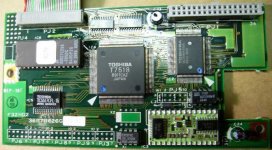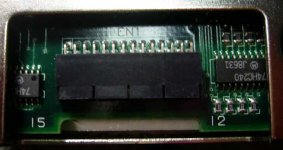Chuck(G)
25k Member
The service manual says the PC7200 takes a JVC JD3824R0-0D1, which is an MFM drive. Granted that the interface cable is 26 pins, but it's definitely not IDE, but RLL MFM. The hard disk interface board contains several LSI components as well as a NEC uPD70008 CPU (a Z80 clone).
When I asked about the HD I/F board, Haem said that he didn't have one in his unit. I saw no reason not to believe him.
I wonder if you could fit a similar small MFM drive, such as a Seagate ST138R in place of the JVC drive. But I suspect any other 3.5" ST412-interface hard drive would be just as hard to come by.
When I asked about the HD I/F board, Haem said that he didn't have one in his unit. I saw no reason not to believe him.
I wonder if you could fit a similar small MFM drive, such as a Seagate ST138R in place of the JVC drive. But I suspect any other 3.5" ST412-interface hard drive would be just as hard to come by.



